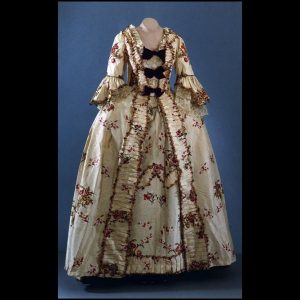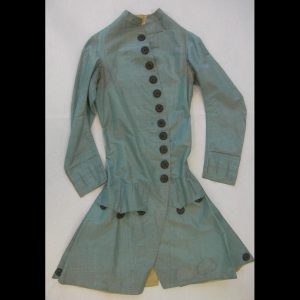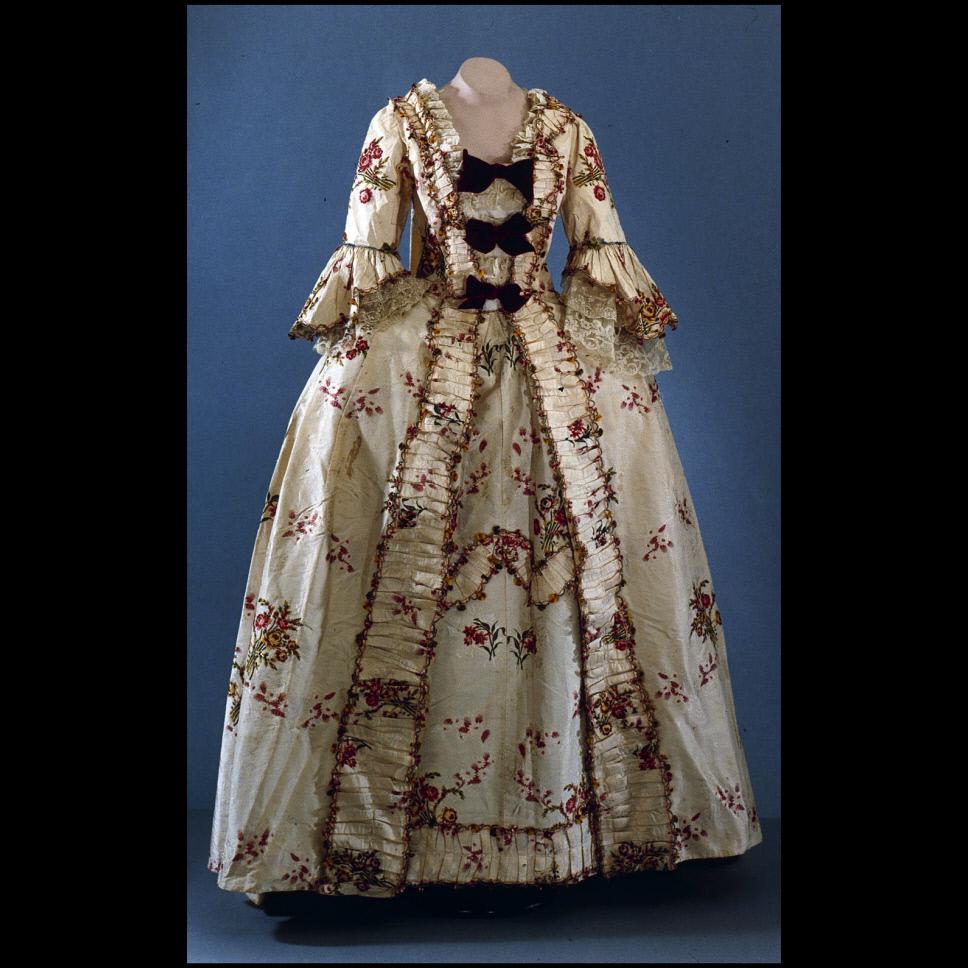Sarah Green // AMH 4110.0M01 – Colonial America, 1607-1763
For most, silks are a fabric associated with the finer things. Silk is a rich, luxury fabric by today’s standards but what about in eighteenth-century America? Silk was as favored back then as it is now.
While examining ledger pages from the Glassford and Henderson Colchester store (1760-1761) in Fairfax County, Virginia, silk is mentioned more than once. People bought silk in many different forms.[1] Silk garters, for example, were used to hold up stockings and to prevent them from rolling down. As garters were essentially the eighteenth-century version of suspenders, both men and women used them.

Cultivated for thousands of years, silk commonly came from China, Italy, and France. The English wanted to rival the French and Italians in the production of silk, but the damp and cold English climate was not agreeable with its production. In 1603, King James sent silkworm eggs and mulberry seeds to America.[2] However, silk was produced inconsistently until the middle of the 1700s and by then, the American colonies were far better at producing cash crop like tobacco.

Trading, for the American colonies, was rather constricted and controlled by the English crown limiting access to open trading. When it came to trading with America, goods had to pass through England as part of the Navigation Act of 1651.[3] The act put more control on the British handlings of domestic goods, placing a restraint on colonial trading and decreasing demand for imported goods; the Act of 1651 also stated that goods were required to be carried in British vessels.[4] While homespun fabrics produced in the colonies were an alternative to buying imported fabrics and textiles, silk remained a popular purchased fabric in America even with the importation restrictions.

Because silk is a lightweight and breathable fabric, it provides comfort to its wearers during the hot summer months in Virginia. Wealthy white women liked to keep cool as much as possible, so they chose to dress in a silken fabric called lustring.[5] Silk was worn in many forms, year round, and not just by women, but by men too. Fabrics made of silk for men’s clothing were often a mix of fibers such as with wool to create alapeen or hairbine which was made with worsted.
While more accessible today than in the eighteenth century, silk was a statement of wealth back then, a way of feeling important as well as being functional. There were many forms to buy silk that added to fashion as well as function. Silk is a timeless fabric that has been sought after for not just for a hundred years, but thousands, and is still popular today.
[1] Alexander Henderson, et. al. Ledger 1760-1761, Colchester, Virginia folio 8 Debit, from the John Glassford and Company Records, Manuscript Division, Library of Congress, Washington, D.C., Microfilm Reel 58 (owned by the Mount Vernon Ladies’ Association).
[2] David Landry, “History of Silk,” Mansfield Historical Society, accessed April 19, 2017, http://www.mansfieldct-history.org/history-of-silk-production/.
[3] Carmen Miner Smith,”Navigation Acts (1651, 1660),” Encyclopedia of North Carolina, accessed April 18, 2017, http://www.ncpedia.org/navigation-acts-1651-1660.
[4] Smith, “Navigation Acts.”
[5] Linda Baumgarten, “Looking at Eighteenth-Century Clothing,” Colonial Williamsburg, accessed April 14, 2017,
https://www.history.org/history/clothing/intro/clothing.cfm.
